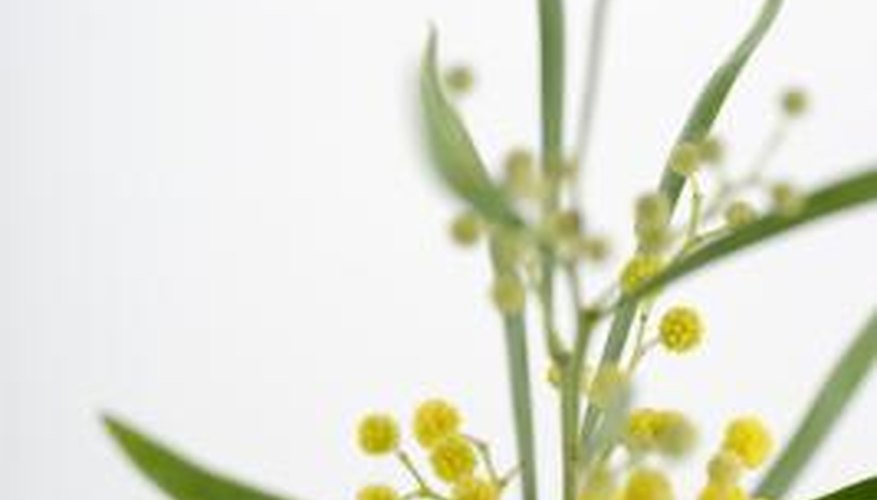A large amount of confusion arises when discussing plants named mimosa or acacia. Both are botanical genus names and both names are used colloquially for certain species of trees that produce pink or yellow puffy flowers. The more ornate flowering species of acacia make showy cut flowers, are commonly called mimosa. Any tree with feathery leaves in the Fabaceae, or legume family, also may be misleadingly or incorrectly called mimosa.
Taxonomy

All plants called mimosas are part of the legume family. Europeans in particular refer to cut flowers of the yellow-blooming acacia or wattle trees as mimosa. In particular, Acacia baileyana and Acacia dealbata provide large flower clusters frequently used in the cut-flower trade. The pink or silky mimosa, Albizia julibrissin, bears much larger flowers that are white and pink. The botanical genera Acacia and Albizia are very closely related within the large legume family. Taxonomists place them in the same subfamily, Mimosoideae.
- All plants called mimosas are part of the legume family.
- The pink or silky mimosa, Albizia julibrissin, bears much larger flowers that are white and pink.
Deciphering names
When the name "mimosa" is applied as a common name, any species in the Acacia genus may be called mimosa. In this application, there is no difference in mimosa and acacia trees. However, only when the common name "mimosa" is freely applied in a regional vernacular to multiple trees does the confusion start. For example, Albizia julibrissin may be interchangeably called silky mimosa, Persian acacia or silk-tree among various English-speaking nations or regions. Plants in the genus Acacia may be called mimosa, wattle, thorn-trees, acacia or prickly Moses.
- When the name "mimosa" is applied as a common name, any species in the Acacia genus may be called mimosa.
- For example, Albizia julibrissin may be interchangeably called silky mimosa, Persian acacia or silk-tree among various English-speaking nations or regions.
Origins
Acacia species grow naturally in the subtropical and tropical parts of the world, mainly in Africa, South America, Polynesia and Australia. The showy yellow mimosa cut flowers, Acacia dealbata and Acacia baileyana, hail from southeastern Australia. They prosper in Mediterranean climates with cool, wet winters and hot, dry summers. The pink or showy mimosa tree is native to central Asia, but has spread as a fast-growing, if not pesky weed across many parts of the temperate world.
- Acacia species grow naturally in the subtropical and tropical parts of the world, mainly in Africa, South America, Polynesia and Australia.
- The pink or showy mimosa tree is native to central Asia, but has spread as a fast-growing, if not pesky weed across many parts of the temperate world.
Physical differences
Mimosas from the genus Acacia bloom naturally from winter into spring and are evergreen trees. Their golden yellow blossoms occur in terminal clusters called racemes on the tips of branches. Individual flowers are small round pom-poms with dozens of stamens. A flower raceme measures 7.5 to 10 cm (3 to 4 inches) long in Acacia baileyana to 10 to 20 cm (4 to 8 inches) long in Acacia dealbata. The pink mimosa tree becomes deciduous in winter. It blooms anytime from spring to midsummer, depending on climate. The 3.7 cm (1 1/2 inch) wide pink and white flower occurs in a cluster called a corymb on branch tips. The corymb is 7.5 to 15 cm (3 to 6 inches) long.
- Mimosas from the genus Acacia bloom naturally from winter into spring and are evergreen trees.
- The 3.7 cm (1 1/2 inch) wide pink and white flower occurs in a cluster called a corymb on branch tips.
